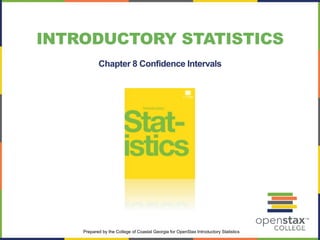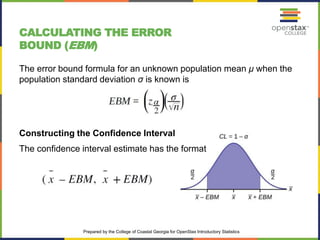This document provides an overview of confidence intervals. It discusses calculating confidence intervals for a population mean using the normal and student's t distributions. The key steps are presented: determining the point estimate, finding the appropriate z-score for the confidence level, calculating the margin of error using the z-score and standard error, and stating the confidence interval. An example is also provided to demonstrate calculating a 90% confidence interval for a population mean when the standard deviation is known.






































